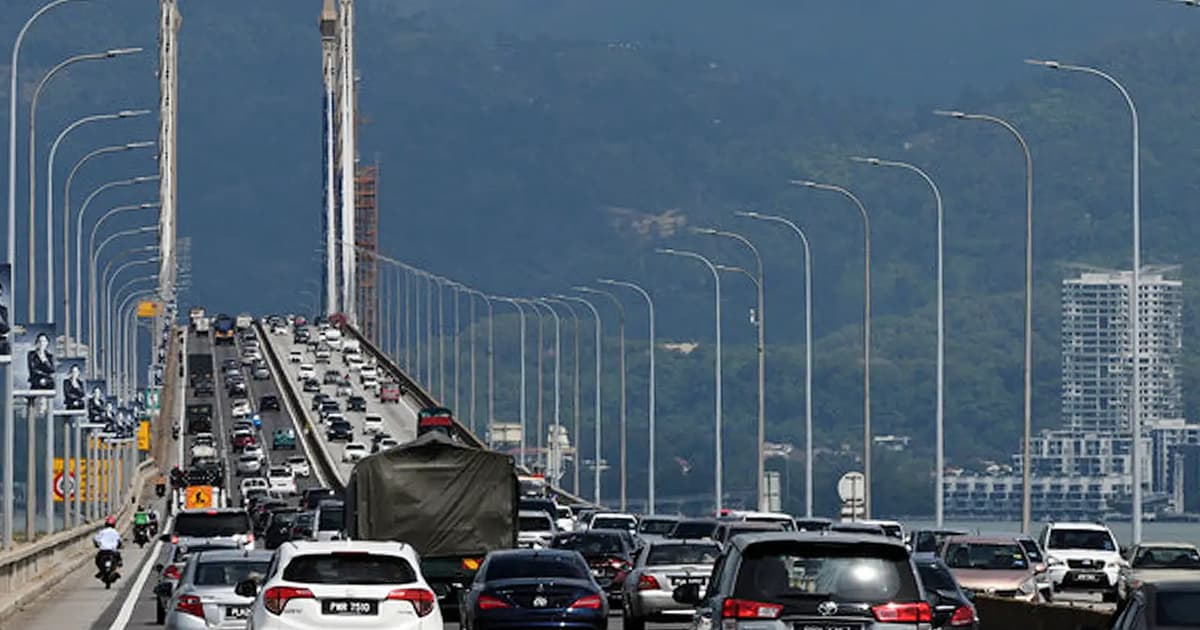
Activists and experts have criticised the Penang government for the worsening traffic situation here, with one of them attributing the problem to the penchant for mega projects over cheaper and more effective solutions.
At the same time, they offered ideas for solutions that, they said, could ease the congestion at a much lower cost.

Former economist and activist Lim Mah Hui cited the upcoming LRT line project and the Mount Erskine underpass as examples of costly projects that were unlikely to deliver “real” relief.
“An LRT here is superfluous. Even Kuala Lumpur, with more than three million people, still struggles to fill its coaches. Why spend RM50 million on an underpass to save a few minutes, only to end up in another jam?” he asked.
He pointed out that civil society has always opted for low-hanging fruits but the government has chosen prestige projects. “This is what you get,” he said.
Lim described chief minister Chow Kon Yeow’s recent warning of “traffic nightmares” caused by mega projects as “ironic”.
Chow had issued the warning on Aug 18 as work on projects such as the LRT and new highways kicked off.
He said then that smaller schemes such as the Mount Erskine underpass could no longer proceed without federal aid, and cautioned that unchecked congestion could deter investors, frustrate visitors, and even erode political support for the state government.
Penang is now seeking federal funds under the 13th Malaysia Plan to build the Mount Erskine underpass. The original plan was to have the city council underwrite the cost.
On the other hand, Lim said, scaling back on such projects, like reducing the number of LRT stations or shortening routes was also unsustainable.
He said the government would still have to spend billions but the infrastructure would no longer be able to meet its objective to fully serve the targeted groups to make it sustainable.
“Cut too much and you get the worst of both worlds: an expensive system that doesn’t serve where people need to go,” he said.
So, Penang ends up with a system that is too expensive to be justifiable as a small project.

Traffic consultant Wan Agyl Wan Hassan said Penang must prepare for years of disruption but stressed that proper planning could ease the impact.
“You need staged construction, smart traffic lights and well-marked diversions. Free shuttle buses and stronger bus services in affected zones can keep the city moving,” he said.
He said the real debate is about bringing upgrades in phases, as buses or autonomous rapid transit (ART) can deliver cheaper gains in the short term, but only rail solutions like LRTs guarantee long-term reliability and high capacity.
“The question is whether or not Penang should start with bus-based systems now while still planning for rail as the backbone,” he said.
Wan Agyl urged the state to quickly take low-cost measures, such as dedicated bus lanes, adaptive traffic lights, ferry and water taxi services, shaded walkways and strict parking rules, while the mega projects take shape.
“Even staggering work hours for employees can flatten the peaks. These steps won’t eliminate jams but will show commuters that progress is being made,” he said.

Historian and Penang Forum member Khoo Salma Nasution said failure to plan had resulted in the ongoing congestion.
“Penang’s traffic problem did not happen overnight. Penang Forum helped the government develop the Halcrow Plan, officially adopted in 2013,” she said.
The plan “crucially envisages the building of a tunnel and more highways only as longer-term priorities if required”, according to a piece by Lim and transport expert Ahmad Hilmy published by Malaysiakini in 2018.
“If it had been implemented even incrementally, we would not be facing a mess today,” Khoo said.
She added that the state had also delayed gazetting the Penang Island Local Plan 2035 for over 17 years since its first draft was completed in September 2007.
“The Local Plan would have set development densities based on traffic and infrastructure capacity, instead of letting developers drive planning.
“Failing to plan and failing to implement good plans means planning to fail,” she said.






